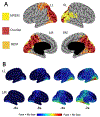Consciousness and sleep
- PMID: 38697113
- PMCID: PMC11105109
- DOI: 10.1016/j.neuron.2024.04.011
Consciousness and sleep
Abstract
Sleep is a universal, essential biological process. It is also an invaluable window on consciousness. It tells us that consciousness can be lost but also that it can be regained, in all its richness, when we are disconnected from the environment and unable to reflect. By considering the neurophysiological differences between dreaming and dreamless sleep, we can learn about the substrate of consciousness and understand why it vanishes. We also learn that the ongoing state of the substrate of consciousness determines the way each experience feels regardless of how it is triggered-endogenously or exogenously. Dreaming consciousness is also a window on sleep and its functions. Dreams tell us that the sleeping brain is remarkably lively, recombining intrinsic activation patterns from a vast repertoire, freed from the requirements of ongoing behavior and cognitive control.
Keywords: bistability; disconnection; dreaming; neural correlates; perception.
Copyright © 2024 Elsevier Inc. All rights reserved.
Conflict of interest statement
Declaration of interests G.T. holds an executive position and has a financial interest in Intrinsic Powers, Inc., a company whose purpose is to develop a device that can be used in the clinic to assess the presence of consciousness in patients. G.T. also holds a patent concerning such a device.
Figures





References
-
- Freud S, and Strachey J (2010). The interpretation of dreams (Basic Books).
Publication types
MeSH terms
Grants and funding
LinkOut - more resources
Full Text Sources

